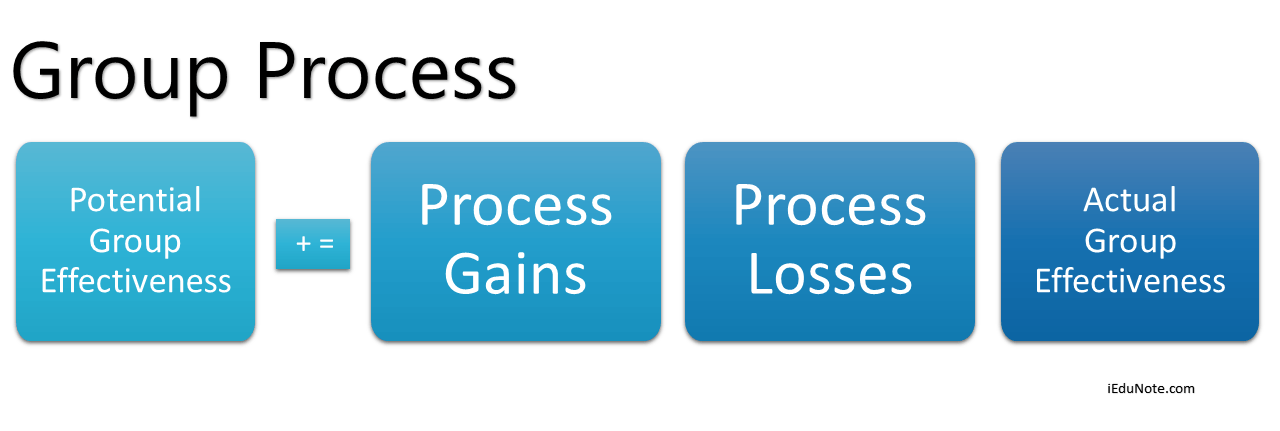Groups are a common arrangement in today’s business environments. Any manager who works with or supervises groups should know how they develop over time.
Perhaps the best-known scheme for group development was advanced by Bruce Tuckman in 1965. Initially, Tuckman identified four stages of group development, including forming, storming, morning, and performing.
A fifth stage was later added by Tuckman about ten years later, which is called adjourning. These stages are believed to be universal to all group members’ teams, purpose, goal, culture, location, demographics, and so on. Let’s look at the stages of group development.
The Five-stage Model of Group Development includes forming, storming, norming, performing, and adjourning. Forming is characterized by uncertainty, storming by conflict, norming by close relationships, performing by full functionality, and adjourning by wrapping up activities.
5 Stages of Group Development
Forming
The first stage of group development is known as the forming stage. The forming stage represents a time when the group is just starting to come together and is characterized by anxiety and uncertainty.
Members are cautious with their behavior, which is driven by the desire to be accepted by all members of the group.
Conflict, controversy, and personal opinions are avoided even though members are beginning to form impressions of each other and gain an understanding of what the group will do together.
Some believe this cautious behavior prevents the group from getting any real work done.
However, the focus for group members during the forming stage is to become familiar with each other and their purpose, not on work.
Typical outcomes of the forming stage include things like gaining an understanding of the group’s purpose, determining how the team will be organized and who will be responsible for what, discussing major milestones or phases of the group’s goal, outlining general group rules and discovery of what resources will be available for the group to use.
Storming
The second stage of group development is known as the storming stage. The storming stage is where conflict and competition are at their greatest.
This is because now that group members have an understanding of the task and a general feel for who they are as a group and who group members are, they feel confident and begin to address some of the more important issues surrounding the group.
Such issues can relate to things like the group’s tasks, individual roles, and responsibilities or even to the group members themselves.
The storming stage is where the more dominant of the group members emerge, while other, less confrontational members stay in the comfort and security of suppressing their feelings just as they did in the previous stage.
Even though these individuals stay quiet, issues may still exist. All members have an increased need for clarification.
Questions surrounding leadership, authority, rules, responsibilities, structure, evaluation criteria, and reward systems tend to arise during the storming stage.
Such questions must be answered so that the group can move on to the next stage. Consequently, not all groups are able to move past the storming stage.
Norming
Once a group receives the clarity that it so desperately needs, it can move on to the third stage of group development, known as the norming stage.
The norming stage is the time when the group becomes a cohesive unit. Morale is high as group members actively acknowledge the talents, skills, and experience that each member brings to the group. A sense of community is established, and the group remains focused on the group’s purpose and goal. Members are flexible, interdependent, and trust each other.
Leadership is shared, and members are willing to adapt to the group’s needs. Information flows seamlessly and is uninhibited due to members’ sense of security in the norming stage.
Performing
At its peak, the group moves into the fourth stage of group development, known as the performing stage. The performing stage is marked by high productivity.
Group members are unified, loyal, and supportive. Competence in all members is seen, allowing for a high level of autonomy in decision-making. Problem-solving, experimentation, and testing possible solutions are high as group members focus on task completion and achievement.
The group’s overall objective during the performing stage is to complete its mission.
Adjourning
For permanent work groups, performing is the last stage in their development.
However, there is an adjourning stage for temporary committees, teams, task forces, and similar groups that have a limited task to perform.
Even the most successful groups, committees, and project teams disband sooner or later. Their breakup is called adjournment, which requires dissolving intense social relations and returning to permanent assignments.
The adjournment stage is becoming even more frequent with the advent of flexible organizations, which feature temporary groups.

